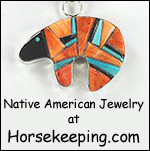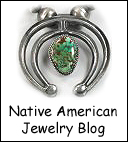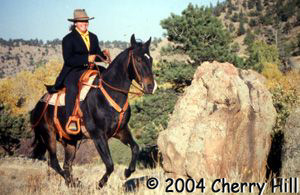Winter Clip
The shorter days and longer, cooler nights of fall trigger a change in your horse’s hair growth. In temperate climates, in August or September, horses begin shedding their short summer hair and replacing it with longer winter hair. The fluffy coat characteristic of horses turned out in the northern states and Canada is usually completely grown in by November. For the horse turned out for the winter, the natural coat is an ideal form of protection, as the long hair traps a layer of warm air next to the body, which acts as insulation. During cold temperatures, piloerector muscles make the hair stand up, which increases the coat’s insulating potential.
To help you with your winter grooming, visit our book store where we have a BUY ONE and GET TWO FREE book sale. Here are some books that might be of interest.
Click here to see all the books ……….
http://www.horsekeeping.com/horse_books/used/used-horse/horse-books-used.htm
http://www.horsekeeping.com/horse_books/book_barn.htm
Ear Clip
Certain places on a horse’s body have extra hair for a reason. The ears, for example, grow extra hair both inside and outside in the fall to keep them warm during the winter. If you need to tidy up your horse’s ears for the winter, just clip them flush and maybe tweak the outline.
However, long winter hair can create difficulties for you if you intend to ride your horse actively during the winter. If you do plan to keep your horse in work throughout the winter, you should consider one of the following: blanketing, clipping, or a combination of clipping and blanketing.
Blanketing. To minimize the density of the winter coat your horse grows in the fall, you can begin blanketing him in August and using lights (see November Reproduction Roundup) so that his body receives the signal that only short to medium hairs are required to replace the summer coat. Of course, once you begin blanketing, you will need to continue blanketing your horse all winter.

Click on this photo to visit our Tack Barn where we have items that are new and used once for photo shoots – all at very low prices.
Body clip. In areas with moderate to severe winters where horses grow a substantial winter coat, you may need to use a type of body clip to minimize grooming and cooling-out time. If you choose a conservative clip and your winter is mild, you may be able to turn out a clipped horse without blanketing him. In most wintry states, however, it is necessary to blanket a clipped horse.
Body clipping will allow you to work your horse vigorously during the winter. Clipped horses sweat less, and what sweat there is will be able to dry more quickly. The clipped horse can be cooled out much more effectively and safely than the unclipped horse. Also, the clipped horse is tidy in appearance and relatively easy to keep clean, an important factor in the non-bath months.
Body clipping won’t appreciably improve the appearance of an unhealthy horse — such a horse will just have a bad short coat instead of a bad long coat. But the healthy horse in active work can benefit greatly from a winter clip.
Types of Clips
There are three basic types of body clips, each with many variations and styles: the full clip, the hunter clip, and the trace clip. The full body clip consists of shortening the hair on the entire horse, including the head and legs. Immediately after a full body clip, most horses, especially bays and chestnuts, appear to be a lighter color.
The (field) hunter clip. This is essentially a full body clip, except that long hair is left on the legs and saddle area. For protection when working in snowy fields, the winter hair remains on the legs from the elbows and stifles down to the coronary bands. In addition, a patch the shape of the saddle pad is also left so that the horse’s back is less prone to chill after work.
The trace clip. This was originally designed for harness horses that worked in the winter. The hair is clipped in the areas where a horse sweats: the throat, chest floor, belly, inner thighs, and under the tail. A conservative trace clip may involve removing a strip of hair 8 to 10 inches wide from the throat under the belly to the anus. The basic trace clip can be embellished with sharp geometric designs and circles so it fits the needs of a more aggressive exercise program.
clipper Tips.
Before you bring your horse in the barn for his clip, be sure your clippers are in working order and that you have several sets of sharp blades on hand.
In very general terms, there are two types of clippers: heavy duty and light duty. The heavy duty clippers are suitable for body and leg clipping. They are designed to be used for extended periods of time because they cool while they are being used. Light duty clippers are suitable for small jobs, such as trimming the muzzle, throat, ears, and bridle path, and perhaps a touch up on the legs. If you use light duty clippers for removing heavy winter hair, not only will the blades quickly become dull, but the motor may overheat and burn out as well.
For most of the body work, heavy duty clippers with a wide head work best. Small clippers are necessary for the legs, head, and tight areas such as the elbows. The clippers for the body work should be outfitted with #10 or #15 blades, which cut hair to about a quarter inch. Never use a surgical blade (#30 or #40) for a body clip, as it would remove the hair right down to the skin.
Body Clipping Basics
Here are some guidelines for the first time you clip a horse.
Take the time to outline a plan. Mentally go through each step of the procedure to be sure you will have everything on hand that you need. Budget enough time for the job. Figure about two to three hours to clip a horse.
Approach the task with patience. If you get frazzled or hurried, your clip will show it. It helps if you are experienced at clipping, but if it is your first time doing a body clip, ask a knowledgeable friend to coach you through the tough spots.
Everyone stay calm. A calm, experienced horse will make your first clipping job easier. However, if you must clip a young or nervous horse, check with your veterinarian for his or her recommendations for an appropriate tranquilizer.
Cleanliness is a virtue. Be sure the horse is very clean before you begin clipping. Dirt can dull clipper blades very quickly. If bathing is possible, wash the horse the day before clipping and let him dry unblanketed. If it is too cold for bathing, thoroughly groom the horse using a rubber curry and vacuum so that the clean hair stands out from the body when you are finished.
Braid the mane and wrap the tail. This will keep them out of the way while you are clipping.
Clipping Procedure
Begin clipping on the shoulder or the barrel with the large-headed clippers. To get a consistent clip, hold the clippers with the blades flat against the horse’s body for the entire session.
Aim the clipper head directly against the hair growth. You will probably be surprised at how many times the hair growth changes direction on the horse’s body.
Using short strokes rather than long strokes results in fewer “tracks,” or residual clipper lines.
As you clip, keep the blades clean and cool. With the clippers running, dip just the tips of the clipper teeth into a commercially prepared blade wash or kerosene. This will cut any oily or dirty residue that has built up on the blades. With the blades pointed toward the floor, shake the excess fluid off the blades before tipping them upright to resume.
If you notice that the sound of the motor changes, it may be that the blades need to be lubricated. Refer to your owner’s manual. Some models require oiling. Others recommend a spray lubricant be used directly on the blades. The lubricant cools the blades and removes small dirt particles, thereby further reducing friction.
Keep the air intake screen clear of hair, or the motor will not cool properly. If the clippers overheat, you must stop using them until they cool. Hot clippers not only can hurt your horse, but the motor can burn up irreparably.
Once you finish clipping the fleshy body parts such as the shoulders, chest, barrel, belly, and thighs, use small clippers on the extremities such as the legs and head.
When you are finished, thoroughly clean your clippers before putting them away. Leaving hair, sweat, and scurf on the blades can result in rusted blades that will not clip well the next time you want to use them.
Finally, curry your horse vigorously, vacuum him, and rub some oil or conditioner into his coat. Groom the clipped horse daily to restore the oil and shine to his coat.
















Leave a comment